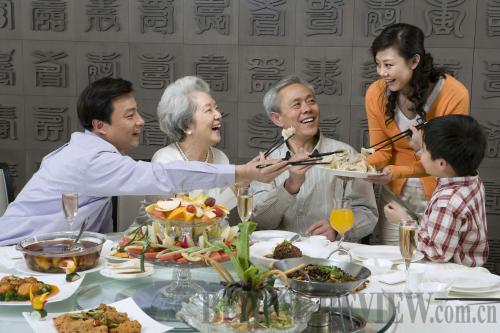|
 |
|
(IC) |
"To the country, people are the foundation; to the people, food is heaven," goes an ancient Chinese proverb. For anyone who has lived in China for a sustained period of time, they will know that this proverb is true, so very true. A nation renowned for its healthy diets and slim figures, Chinese people adore their food and distinguish themselves from other regions through their culinary specialties.
After recently watching a China Central Television documentary series called A Bite of China, I've been paying closer attention to the food I eat: its region of origin, cooking and preparation methods, presentation, spices and so on. There really is so much more to Chinese cuisine than first meets the eye.
Perhaps most importantly, there are eight culinary traditions of China by region:
- Guangdong (Yue) cuisine, or Cantonese food: Tastes are generally sweeter, and it favors braising, stewing, and adding various sauces.
- Sichuan (Chuan) cuisine: Spicy and bold, this school of cooking relies heavily on chili, garlic, ginger and peanuts.
- Shandong (Lu) cuisine: Salty and crispy and heavy on seafood, many foods are braised.
- Fujian (Min) cuisine: Using ingredients from the sea and mountains, foods are lighter, with a sweet-and-sour taste.
- Jiangsu (Su) cuisine: Fresh foods prepared with very precise cooking techniques jump between salty and sweet, usually in soups.
- Hunan (Xiang) cuisine: Almost as spicy at its Sichuanese counterpart, favored techniques include sautéing, stir-frying, steaming and smoking.
- Anhui (Hui) cuisine: Using many wild plants and animals as ingredients, dishes are often stewed or cooked with extra oil.
- Zhejiang (Zhe) cuisine: Freshwater fish, seafood and bamboo shoots are prepared with a wide variety of cooking methods.
To really appreciate these dishes you need to visit each specific region and embroil yourself in the whole culinary experience. There are many wonderful restaurants spread throughout China—it's easy to stumble upon a Sichuan restaurant in the heart of Beijing—but the most adamant of food lovers will assure you that the best place to eat Sichuan cuisine is, not surprisingly, in Sichuan Province.
The recipes and traditions of Chinese food stretch back thousands of years, with the same ingredients and cooking processes still being used today.
Mealtimes in China are the most important times of the day. Family, friends or colleagues gather at the dining table. Even business deals are often chewed over around circular tables lavished with mountain-high dishes of local delicacies.
Hosts always encourage their guests to eat as much food as possible. It's a show of respect to the host to duly oblige. There are many ways to show respect in China, and at the dinner table can be a great place to practice. Even small acts, such as clinking your glass lower when saying "cheers," can be seen as showing respect to seniority at the table, along with keeping your neighbor topped up on beer or tea.
When attending restaurants in different provinces, it's always a wise idea to snuff out a famous local dig and ask what their specialty is—chances are it's going to be authentic and memorable, for better or for worse. When living in a city called Shaoxing in Zhejiang Province, home to choudoufu (stinky tofu), I was certainly left with some less-than-fond memories. A more pleasurable experience was in the garden city of Suzhou, in Jiangsu Province, where I indulged in the famous sweet-and-sour fish. To this day, I am determined to go back, as nowhere else I've visited does that dish to the same exceptional quality.
I've recently started preparing an eating list of Chinese food subcategorized by region. I'm going to leave the Sichuan cuisine until last, though, as it's the spiciest and my pallet isn't prepared yet. After three years in a country where food is heaven, it really is time I became more adventurous in this culinary paradise.
The author is a Briton living in Beijing | 